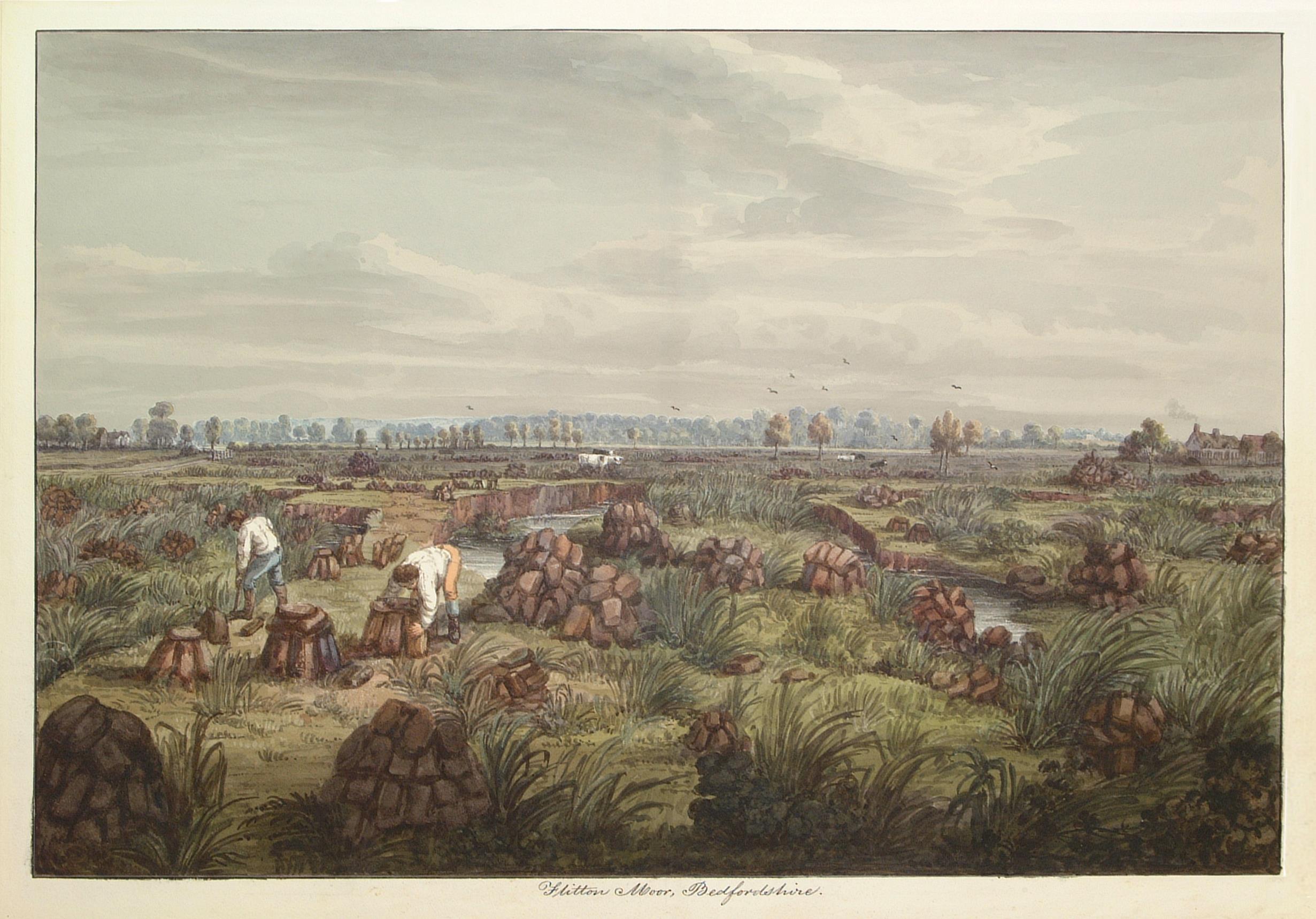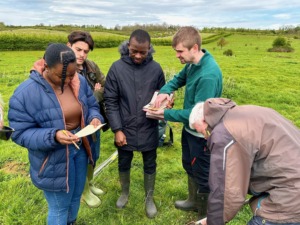In the tyre tracks of the Edwardian geologists
15/04/2024

In April 1905 a group of amateur geologists loaded their cumbersome bicycles on to a north-bound train at a London rail station and set off for Bedfordshire on a field excursion.
In March 2024 a group of six postgraduate students from Cranfield University undertaking their MSc Group Project ‘Lowland Agricultural Peat Water Discovery Pilot’ – travelled by minibus – and followed part of the same route across the Flit Valley, Bedfordshire to embark on a project aiming to assess the present-day distribution and condition of the fragile peat soil resource in the areas of Flitton and Flitwick Moors. The student team comprised members from MSc courses in Environmental Engineering and Geographical Information Management, now known as Advanced GIS and Remote Sensing, here at Cranfield – the group project is a key part of their year of study.
During a literature review, undertaken as part of the project requested by the Greensand Trust in Bedfordshire, an intriguing academic paper from the Proceedings of the Geologists Association (GA) [1] was unearthed. This paper recorded in sublime detail the activities of the cycling cohort of the Association, providing a glimpse of these enthusiastic geological field explorers who combined the rising public interest in the science of geology with the newfound sense of freedom in cycling, and the expansion of the railway network providing easy access from London. The paper describes in some depth the organisation of these excursions during a period from 1899 to 1910, as recorded in the archives of the GA. It is possible that these trips began before 1899 as early records of the Association were damaged by a fire. The average distance covered on their heavy steel framed cycles is estimated at some 15 miles. Bedfordshire was popular destination for excursions by the GA beginning in 1881, with visits likely on foot to start with, to the chalk outcrops at Totternhoe and continuing until 1915 with an excursion to the Leighton Buzzard sand quarries.
Today, some 125 years later, the Cranfield MSc students followed footpaths along the River Flit exploring the present-day land use and visiting a nature reserve at Flitton Moor. Sadly there is no visual record of the cycling geologists themselves, but the importance of the peatlands to the local communities is captured in the earlier painting by Thomas Fisher (c.1815) entitled ‘Flitton Moor’ [2], showing peat cutters working in the Flit Valley, shown here. Today, there are both historic peat records from this area, and accurate (if sparse) observations made by the soil surveyors in the 1950s. These field sheet maps are part of the unique records of the Soil Survey of England and Wales and are archived at Cranfield University [3].
The student project is a small part of the national programme launched by the Environment Agency across England to collect an enhance the record to the remaining lowland peat resource, with a view to protecting this as contribution to carbon storage [4]. Much of the project area is already protected by designations such as a Site of Special Scientific Interest (SSSI) or by being a designated Local Nature Reserve (LNR). The challenge is to map out the future management of these sites as a contribution to the aspiration of attaining net zero in the coming decades.

References: [1] Thomas Hose, Proceedings of the Geologists Association, 2018, Awheel in Edwardian Bedfordshire: A 1905 Geologists’ Association cycling excursion revisited and contextualised.[2] Thomas Fisher (c.1815) ‘Flitton Moor’.[3] The archive of Soil Survey of England and Wales is assessable through the LandIS digital portal (http://www.landis.org.uk).[4] Lowland Agricultural Peat Water Pilot Discovery Pilot. Funded in England by the Environment Agency.
Categories & Tags:
Leave a comment on this post:
You might also like…
Keren Tuv: My Cranfield experience studying Renewable Energy
Hello, my name is Keren, I am from London, UK, and I am studying Renewable Energy MSc. My journey to discovering Cranfield University began when I first decided to return to academia to pursue ...
3D Metal Manufacturing in space: A look into the future
David Rico Sierra, Research Fellow in Additive Manufacturing, was recently involved in an exciting project to manufacture parts using 3D printers in space. Here he reflects on his time working with Airbus in Toulouse… ...
A Legacy of Courage: From India to Britain, Three Generations Find Their Home
My story begins with my grandfather, who plucked up the courage to travel aboard at the age of 22 and start a new life in the UK. I don’t think he would have thought that ...
Cranfield to JLR: mastering mechatronics for a dream career
My name is Jerin Tom, and in 2023 I graduated from Cranfield with an MSc in Automotive Mechatronics. Originally from India, I've always been fascinated by the world of automobiles. Why Cranfield and the ...
Bringing the vision of advanced air mobility closer to reality
Experts at Cranfield University led by Professor Antonios Tsourdos, Head of the Autonomous and Cyber-Physical Systems Centre, are part of the Air Mobility Ecosystem Consortium (AMEC), which aims to demonstrate the commercial and operational ...
Using grey literature in your research: A short guide
As you research and write your thesis, you might come across, or be looking for, ‘grey literature’. This is quite simply material that is either unpublished, or published but not in a commercial form. Types ...







